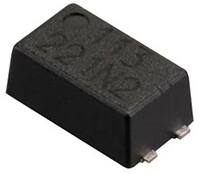No need to wait to take advantage of multi-access edge computing
For the telecom industry May and June are intense trade show months. Sometimes missing just two or three that would have been relevant, can’t be helped if you do not have unlimited bandwidth. Wind River over the past few weeks has sent teams over to NFV World Congress, OpenStack Summit, DellEMC World, Big Communications Event, Network Virtualisation and SDN Europe, Canadian Telecom Summit, Interop Tokyo and OPNFV Summit.
Guest blog by Charlie Ashton.
That’s a lot of events in a short amount of time, giving the company some powerful insights into where service providers worldwide are focused right now in terms of growth opportunities. It was found that a hot topic, in conversations and presentations at all these events has been Multi-access Edge Computing, or MEC.
This time last year, ‘MEC’ stood for Mobile Edge Computing. Then, after a MEC group was formed by ETSI to work on Application Programming Interfaces (APIs), the leaders realised that the benefits of the technology were not limited to mobile access but equally applicable to wireless networks. Hence the new term Multi-access Edge Computing and no need to replace all the T-shirts that already say MEC.
Service providers worldwide are aggressively pursuing MEC projects because this application promises not only operational cost reductions but also significant opportunities to generate new revenue from new customers. By bringing content and applications to data centres in the Radio Access Network, MEC allows service providers to introduce new types of services that are unachievable with cloud-hosted architectures because of latency or bandwidth constraints.
Talking to service providers about the specific new business opportunities that they see around MEC, four applications were commonly mentioned:
- Small-cell services for stadiums and other high-density locations, where by deploying applications hosted at the network edge (i.e. in the stadium itself), stadium owners and service providers can offer a wealth of integrated services that include real-time delivery of personalised content to fans’ devices. In this case MEC also minimises backhaul loading because the new traffic is both generated and delivered locally.
- Augmented Reality (AR), Virtual Reality (VR) and tactile Internet applications, which are just not viable without super-fast response times, local image analytics and deterministic, low latency communications. Use cases like remote medical diagnostics and tele-surgery will demand millisecond response times, far quicker than those achievable by round-trip communications with a remote cloud data centre.
- Vehicle-to-Everything (V2X) communication with high bandwidth, low latency, guaranteed availability and robust security. Whether the use case is Vehicle-to-Vehicle or Vehicle-to-Infrastructure, it’s impossible to meet these performance requirements with a centralised, cloud-hosted compute model.
- Mobile HD video and Premium TV with end-to-end Quality of Experience (QoE), enabling a superior user experience as well as smarter utilisation of network resources. Content providers have learned the hard way that video quality is critical for subscriber retention: studies show that a one- second re-buffering event during 10-minute premium service clip causes a 43% drop in user engagement. MEC allows service providers to optimise video content, ensuring a fast start and smooth delivery.
No single company has expertise in all the product areas required for a complete end-to-end MEC solution. It’s a classic opportunity for effective ecosystem-based collaboration, which is how Wind River has approached the market. Through Titanium Cloud ecosystem, it partners both with vendors who provide hardware suited for running the Titanium Core and Titanium Edge virtualisation platforms as well as with software companies who specialise in MEC applications.
For MEC, Wind River cooperated with two partners, DellEMC and Saguna, to deliver a validated, pre-integrated end-to-end solution that can be deployed immediately. It demonstrated this solution at most of the events mentioned above, with massive interest from attendees.
This demonstration will be part of a webinar on Tuesday June 20th hosted by SDxCentral, titled “Enabling MEC as a New Telco Business Opportunity”.
During the webinar, DellEMC, Saguna and Wind River will explain how the combination of DellEMC’s servers, Saguna’s MEC middleware and Wind River’s virtualisation platform enables service providers to accelerate their deployment of MEC-enabled applications, benefiting from the business opportunity to sell new kinds to services to new kinds of customers.
Delivering MEC services that constitute a great user experience while minimising operational costs is not easy. It requires a combination of application software, platform software and hardware that have been optimised for this application and integrated to work together seamlessly.
It is advised to register for the webinar now to learn more about this joint solution.
Courtesy of Wind River.


